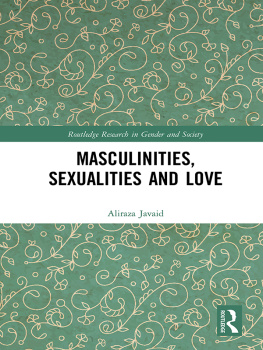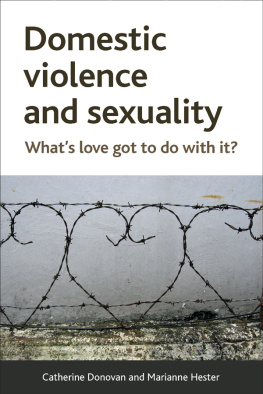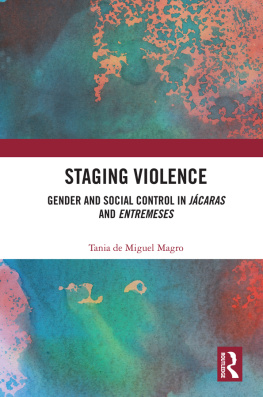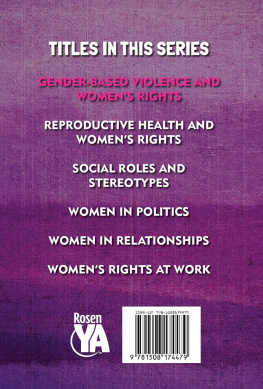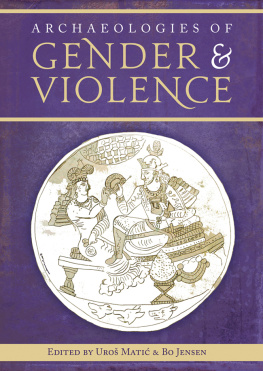Violence in Everyday Life: Power, Gender, and Sexuality was first published in 2020 by Zed Books Ltd, The Foundry, 17 Oval Way, London SE11 5RR, UK.
www.zedbooks.net
Copyright Aliraza Javaid 2020
The right of Aliraza Javaid to be identified as the author of this work has been asserted by him in accordance with the Copyright, Designs and Patents Act, 1988
Typeset in Plantin and Kievit by Swales & Willis Ltd, Exeter, Devon
Cover design by Adriana Brioso
Cover photo Michael Mouritz/Unsplash
Printed and bound by CPI Group (UK) Ltd, Croydon, CR0 4YY
All rights reserved. No part of this publication may be reproduced, stored in a retrieval system or transmitted in any form or by any means, electronic, mechanical, photocopying or otherwise, without the prior permission of Zed Books Ltd.
A catalogue record for this book is available from the British Library
ISBN 978-1-78699-722-7 hb
ISBN 978-1-78699-725-8 pdf
ISBN 978-1-78699-724-1 epub
ISBN 978-1-78699-726-5 mobi
I dedicate this book to all the people who suffer various forms of violence in their everyday life. You are my strength, my hope, and saviour that we can come out at the other side as victors. This is for you.
In the past few decades, both in traditional disciplines and in gender and sexuality studies, queer and feminist writers have made us increasingly aware of the importance of sexualities and masculinities in shaping social life. Both gender and sexuality organise social life, joining other identity markers, such as race, ethnicity, class, age, and so on, to gain an understanding of our own everyday lives. These identity markers are unstable, shifting across time, place, and context; they are useful for understanding how they intersect with violence. That said, in this book, I synthesise the themes of gender, sexuality, and violence, bringing together literatures and research works that have been produced in these fields to offer a coherent framework for understanding the interrelationship between these concepts. I attempt to theorise the relationship between gender, sexuality, and violence. I draw on hegemonic masculinity throughout the book to make sense of the different forms of violence that I closely examine. The way that I am defining and conceptualising hegemonic masculinity is that it refers to a form of masculinity that legitimates unequal gender relations between men and women, between masculinity and femininity, and among masculinities. At the three levels, local, regional, and global, I consider the ways in which hegemonic masculinities are reproduced through violence. state that:
Hegemonic masculinity was not assumed to be normal in the statistical sense; only a minority of men might enact it. But it was certainly normative. It embodied the currently most honored way of being a man, it required all other men to position themselves in relation to it, and it ideologically legitimated the global subordination of women to men. (p. )
The constructing of gender through mens violence against other men is well established (), when men and women carry out violence. Of course, violence is not the only way that hegemonic configurations of masculinity can be created since hegemony is a concept referring mainly to non-violent ways of establishing and reproducing privilege, such as through culture, civil society, religion, and ideology. For example, hegemony can be attained through non-violent means through the gender labour in the home, the workplace, the education system, where there is a clear binary between men and women, between masculinity and femininity. Women are still the primary caregivers in the home context, whereby they engage in unpaid home labour, looking after the children, supporting the emotional welfare of their male partner, cooking, and cleaning.
Other masculinities are also important in understanding violence. For example, in the context of homophobic violence, gay victims are usually positioned in subordinate masculinities as they are oppressed and not regarded to be equal, so legitimating unequal gender relations (see :
[M]eaning is constructed through languages, through the relation of terms to each other. Men and women, normal and abnormal, heterosexual and homosexual, all key terms in the sexological vocabulary, each derives its meaning from the existence of the other. Sexuality is relational; it exists through its relation to other concepts (the non-sexual). It is a linguistic unity. Language, of course, does not determine reality, or create the erotic simply by its existence. Meaning never floats free: it is anchored in particular sets of statements, institutions and social practices which shape human activity through the social relations of power Sex and sexuality are social phenomena shaped in a particular history. (pp. )
When I am referring to identity construction, I am referring to social symbolic identities from post-structural and symbolic interactionism frameworks to mean that identities are unstable, fluid, dynamic, and susceptible to ongoing change within a web of power relations. Identities become symbolically meaningful in relation to others. Identities can even be made without the physical presence of others because we have a social awareness of others, even when those others might not be in close proximity to us. Sexual identities, according to ). Doing sex, gender, and sexuality intersect here, as well as throughout the book (e.g. the construction of heteromasculine and heterofeminine identities during violence). This book, then, highlights the ways in which constructs of gender and sexuality interlink with different forms of violence, such as intimate partner violence, homophobic violence, and more, to make sense of how gender and sexuality are being reproduced through violence. The following questions will form the basis for this book:
How do concepts around gender and sexuality interlink with violence?
What are the social and cultural implications of violence?
What are the offending, victimisation, and policing patterns associated with sexual violence, murder, homophobic violence, intimate partner violence, and transphobic violence?
In what ways are hegemonic masculinities and heteronormativity constructed during episodes of global violence?
How can we use hegemonic masculinity and heteronormativity to help us make sense of violence?
In what ways can autoethnography help one to understand ones own experiences of violence?
I see this book as serving to enhance students knowledge and experience of their courses and to enhance their understanding through providing insights into the concept of violence. Moreover, the book will, through its eclectic mix of issues associated with violence, disseminate knowledge not only to students, but also to researchers. Therefore, the pedagogical usefulness of the book is to be found in the insights the book will provide on the different concepts used in evaluating the subject of violence, as well as the connections that can be made between gender, sexuality, and violence in different contexts. I hope this will help scholars and students to become more aware of, and prepared to undertake, their own research plans relating to the social and cultural constructions of gender, sexuality, and violence. To this end, at the end of each chapter, I have provided some questions for students, practitioners, and scholars (as well as the general lay reader) to ponder over and to contemplate. For students, the questions can be addressed in seminars and lectures after the students have engaged with the book and wider reading. They will also help to trigger the readers memory on the issues covered in each chapter. In addition, I draw on case studies, such as cases reported in the media of real-life cases of violence; I attempt to apply theory to such case studies to elucidate and make sense of them. Students, as well as the general lay reader, can grapple with the issues that emerge from the case studies, provoking critical debate. I hope that the insights I offer about violence will be able to poetically and soulfully connect with readers. After all, humans have suffered violence since Homo sapiens entered this earth realm.


